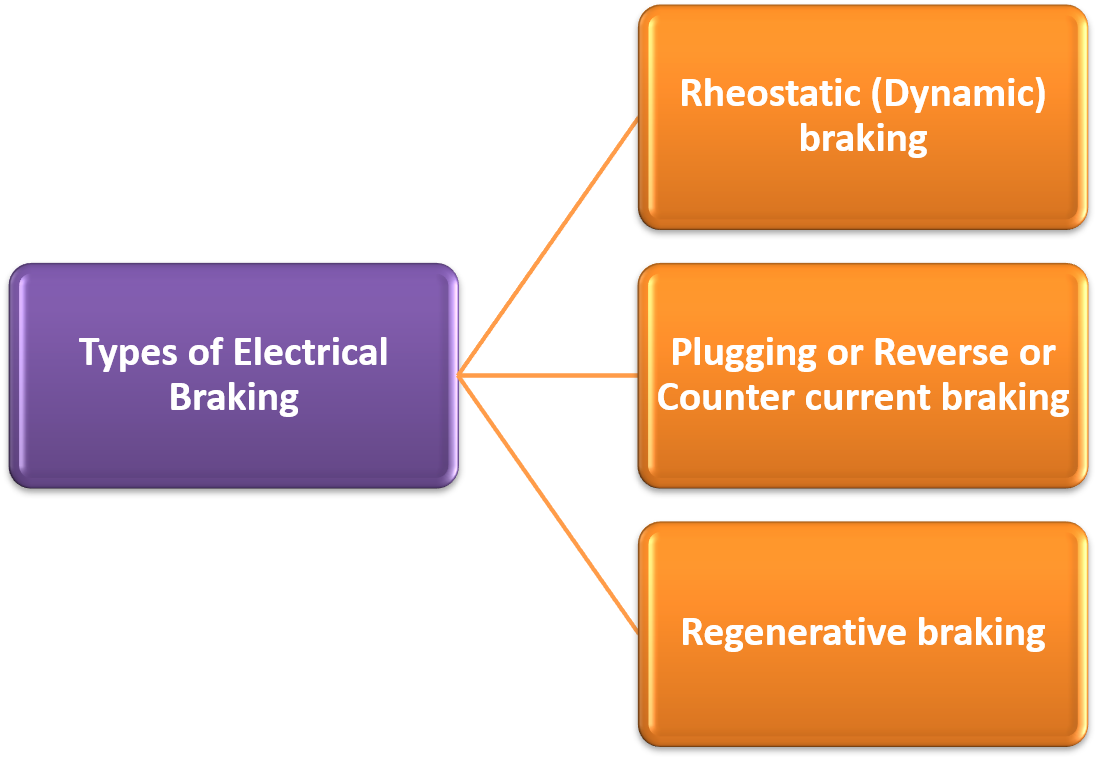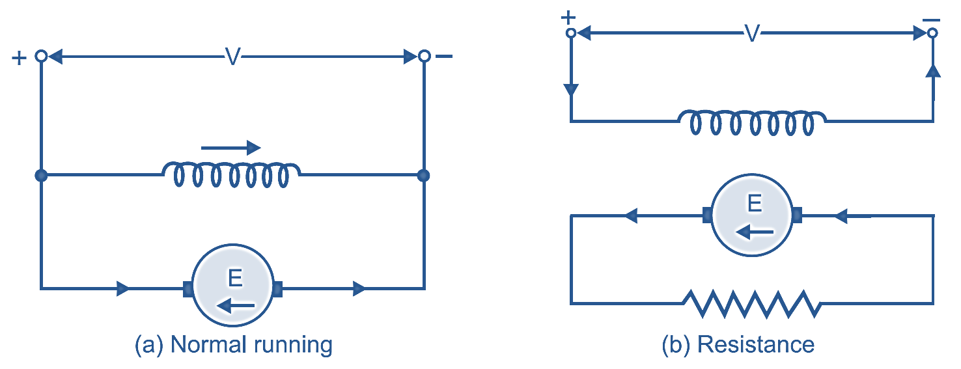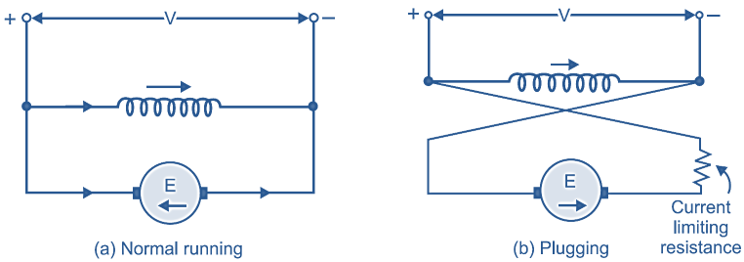In many practical applications, it is necessary to stop the motor quickly than quick starting. Delay in starting a motor keeps machinery idle causing no adverse effects. But a delay in stopping a motor can cause heavy damage to equipments arid even loss of life of operator. Hence electric braking is important which stops the electric machines quickly than the mechanical brakes.
In electric braking, the stored energy in the rotating parts of an electric machine is converted into electrical energy and dissipated by the resistance in the form of heat or returned back to the supply.
Types of Electrical Braking
The three types of electric braking are,

Rheostatic (Dynamic) braking
In this method, mechanical energy is converted to electrical energy and dissipated in the resistance as a heat which acts as an electrical load. Rheostatic braking applied to DC Shunt motors as shown in Fig. 1.

Fig. 1: Plugging with shunt motor
Plugging or Reverse or Counter current braking
In this method, the power supply connections of the motor are reversed so that it tends to drive the motor in opposite direction and eventually comes to rest where supply is cut off. Plugging applied to DC Shunt motors as shown in Fig. 2.

Fig. 2: Rheostatic braking of shunt motors
Regenerative braking
In this method, the motor is operated as a generator and still connected to the supply. The mechanical energy, converted to electrical is returned back to the supply. Regenerative braking applied to DC Shunt motors as shown in Fig. 3.

Fig. 3: Regenerative braking with shunt motors
Advantages of Electrical Braking
The advantages of electric braking are,
- It is economical and very fast.
- No need of any mechanical equipments.
- Very little maintance is required.
- Operation is clean and dust free.
- The energy converted to electrical and fed back to supply network.
- The braking is very smooth without steps.
- It is easier, economical effective and efficient.
- The automatic control is possible using closed loop.
Limitations of Electrical Braking
The limitations of electric braking are,
- Holding torque can not be produced. It can not hold the motor at any desired position.
- The choice of motor is limited as it must have suitable braking characteristics.
- The safety considerations are to be properly monitored and observed.
- The power consumption is more.